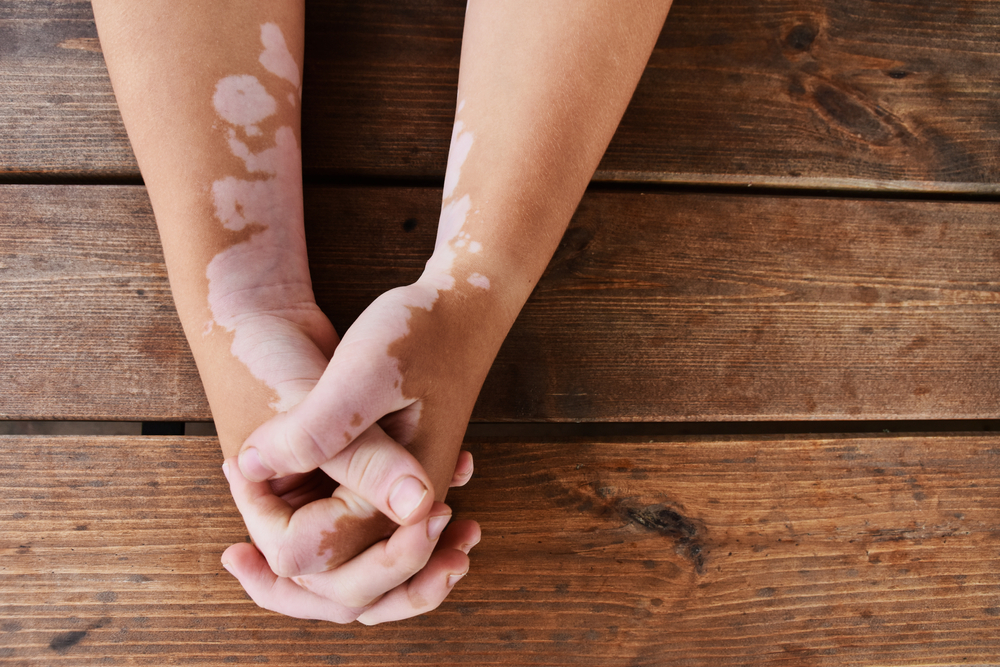Vitiligo is a skin condition that causes the loss of pigmentation in patches on the skin, making it appear lighter. While it is not a life-threatening condition, it can have a significant impact on a person’s quality of life. The good news is that a drug called ruxolitinib, which has been touted as a “miracle” cream, has shown promise in treating vitiligo.
Vitiligo is a chronic skin condition that affects around 1% of the global population. It can occur at any age, but typically develops in people between the ages of 10 and 30. The condition is characterized by the loss of melanin, the pigment that gives skin its color. This results in white or light-colored patches on the skin that can occur anywhere on the body. The condition is not contagious and is not caused by an infection or a physical injury. Instead, it is thought to be an autoimmune disorder. It is not clear what triggers this immune response, but it is thought to be a combination of genetic and environmental factors.
What causes vitiligo?
The exact cause of vitiligo is not known, but it is believed to be an autoimmune disorder. This means that the body’s immune system mistakenly attacks and destroys the melanin-producing cells in the skin. Some researchers also believe that genetic factors may play a role in the development of vitiligo, as it tends to run in families. However, not all people with a family history of the condition will develop it. Environmental factors may also trigger the development of vitiligo in people who are genetically predisposed to the condition. For example, sunburn or exposure to certain chemicals may cause damage to the melanin-producing cells, making them more vulnerable to attack by the immune system. Other factors that may increase the risk of developing vitiligo include having a history of autoimmune disorders, such as thyroid disease or type 1 diabetes.
How does ruxolitinib work?
Ruxolitinib is a drug that is currently used to treat certain blood disorders, such as myelofibrosis. However, recent studies have shown that it can also be effective in treating vitiligo. The drug works by blocking the activity of certain enzymes that are involved in the immune response. By doing so, it can prevent the immune system from attacking and destroying the melanin-producing cells in the skin.
One study, published in the journal JAMA Dermatology, found that ruxolitinib was effective in repigmenting the skin of people with vitiligo. The study involved 157 people with vitiligo who were randomly assigned to receive either ruxolitinib cream or a placebo cream twice a day for 24 weeks. At the end of the study, more than 50% of the participants who received the ruxolitinib cream had a significant improvement in their vitiligo, compared to only 3% of those who received the placebo cream.
Another study published in the New England Journal of Medicine, found that ruxolitinib was effective in treating a type of vitiligo known as segmental vitiligo. This type of vitiligo is characterized by white patches that occur on one side of the body, and is thought to be caused by a different mechanism than the more common generalized vitiligo. The study involved 23 people with segmental vitiligo who were treated with ruxolitinib cream twice daily for 24 weeks. At the end of the study, 43.5% of the participants had a significant improvement in their vitiligo, with repigmentation occurring in more than 75% of the affected area.
The results of these studies are promising, and suggest that ruxolitinib could be an effective treatment option for vitiligo. However, more research is needed to confirm its safety and effectiveness, as well as to determine the optimal dosage and duration of treatment.
Incidence of vitiligo in Asia
Vitiligo is a common skin condition in Asia, with a reported incidence of up to 2.5% in some populations. In countries where lighter skin is considered more desirable, such as India and China, the condition can have a significant impact on a person’s quality of life. Vitiligo can be particularly distressing for people in Asia, where there is often a stigma attached to skin conditions, and where people with vitiligo may be subject to discrimination and social exclusion.
Despite the high incidence of vitiligo in Asia, treatment options for the condition are limited. Many people rely on cosmetic cover-ups, such as makeup or skin dyes, to hide the patches of depigmented skin. However, these cover-ups can be time-consuming and expensive, and may not be effective in all cases. The potential use of ruxolitinib as a treatment for vitiligo could be life-changing for many people living with the condition in Asia. A more effective treatment option could improve their quality of life and help to reduce the stigma associated with the condition. However, access to the drug may be a challenge, as it is currently only approved for the treatment of certain blood disorders and may not be widely available in some countries.
The potential use of ruxolitinib as a treatment for vitiligo could be a game-changer for people living with the condition. While more research is needed to confirm its safety and effectiveness, the results of recent studies are promising. The use of ruxolitinib as a treatment for vitiligo also highlights the importance of continued research into autoimmune disorders and their treatment. As our understanding improves, we can hope to see more effective treatments and better outcomes for people living with autoimmune disorders.














